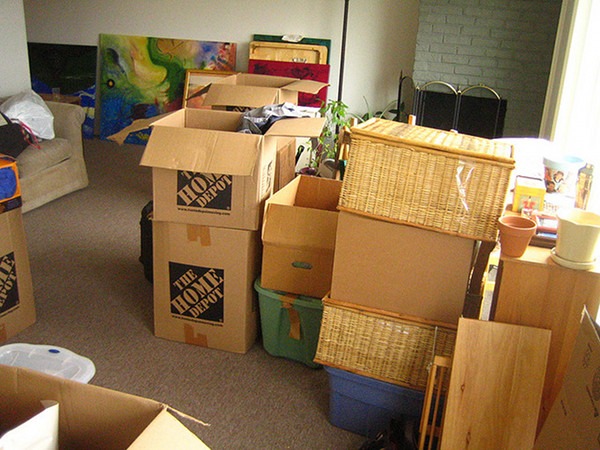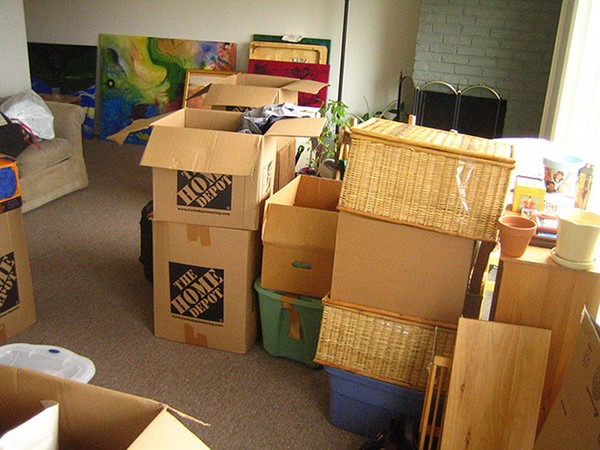
How To Plan a Low-Waste Move
If you’re planning a move soon, your mind is likely a whirlwind of checklists, dates, and deadlines. Factor in the impact your impending move may have on the planet and things get even more stressful (think: the horror of lugging 10 trash bags to the curb on move-out day).
Here is a list of tips that will help shrink the environmental impact of your move. They’ll also help you save time and money and avoid headaches so you can concentrate on more important things — like getting to know your new neighbors.
Take a Personal Inventory
A big move is a perfect opportunity to part ways with things you don’t use anymore. Even if you aren’t downsizing to a smaller living space, you can simplify your move by streamlining your belongings and start out in your new home free of clutter.
Before you start packing, take stock of your stuff and decide what you really want to keep and what you don’t need anymore. Give yourself plenty of time in advance. Stick to one room per day to keep the task from becoming overwhelming or stressful.
As you assess your items, group them into three categories: stuff you will sell, donate, and keep. For items that don’t fall into these categories (such as damaged furniture or unwanted bedding), use our helpful guides to find reuse and recycling solutions for all kinds of common odds and ends from your kitchen, bedroom, closet, garage, and backyard.
Know How and Where to Sell Your Stuff
A garage sale or yard sale is one way to get rid of unwanted housewares, clothing, and furniture, but keep in mind that these sales probably won’t net you much cash.
To make the most of your still-usable stuff, take more-specific routes for pricier items and use your yard sale as a last resort. Here are a few savvy ways to give a second life to some of your big-ticket items and make a few extra bucks in the process:
Fashionable Clothing, Shoes, and Accessories
Secondhand retailers like Buffalo Exchange and Plato’s Closet are ideal for selling your unwanted fashions. Keep in mind that these shops won’t take everything you bring in, but you’ll get more money for your items than you would at a yard sale.
If you’re having trouble tracking down a secondhand shop near you, thredUP and Swap offer similar services on the web.
Furniture in Good Condition
Sites like Craigslist allow you to set your own price for gently used furniture (and pretty much anything else you want to sell). You can designate your items for local pickup only to save on carbon emissions. Who knows? That old dining room table could be just what a neighbor is looking for.
Electronics
You can make some cash by recycling unwanted electronic devices that are still in working condition. Sites like Gazelle and BuyBackWorld will give you an instant quote and you’ll usually receive payment in fewer than two weeks.
Books, CDs, and DVDs
Local used bookstores and music shops will often accept your old books, music, and movies for resale. Don’t expect a big payout for these, but at least the items won’t go to waste!

Schedule a Donation Pickup to Save Time
If you plan to donate a sizable chunk of your unwanted stuff, avoid schlepping carloads of belongings across town or renting a moving vehicle and simply schedule a free home pickup from a local charity.
Goodwill, Salvation Army, and some Habitat for Humanity ReStore locations offer home pickup services for larger items like furniture and appliances. If you have boxes of smaller items, just set them aside for your pickup day. The driver will gladly take everything you have if it’s on the charity’s list of accepted items and you also donate a few larger pieces to make the trip worth their while.
If you’re more interested in saving time than making extra cash from your usable items, a pickup simplifies your home purge and helps alleviate the stress associated with your move.
Get Smart About Transportation
The distance of your move, along with the number of possessions you plan to take with you, will dictate the best transportation choice to minimize your carbon impact.
For example, if you’re moving a fairly short distance, packing your car and hitting the open road is likely the least carbon-intensive choice. A one-way plane ticket typically has the smallest impact for long-distance moves, but this may not always be an option if you’re bringing a car or a lot of large items with you.
To help inform your decision, use a carbon calculator like TerraPass to estimate the approximate carbon footprint of driving to your destination, and compare this with carbon numbers associated with flying and shipping your belongings separately. Also, the BeFrugal Fly or Drive Calculator lets you enter the details of your trip and gives you estimates of your financial and CO2 impact for driving versus flying to your destination.
If you choose to ship your stuff, rail will likely be less carbon intensive than shipping by truck, but you will likely be limited by restrictions about what you can ship. If you’re driving yourself, compare the miles per gallon of a moving van compared to driving your car or truck and hauling a trailer. If your car gets decent fuel economy, a trailer is probably your best bet.
Choose Reusable Moving Options
Zero-waste moving solutions like Rent a Green Box and BungoBox provide reusable boxes and totes that make it easy to move all your stuff without the waste. Skip the bubble wrap and packing peanuts for your breakables. Instead, use reusable items that you’re already taking with you, such as towels, blankets, bed sheets, and sweatshirts.
If you don’t have enough reusable packing materials, old newspapers and packing paper are still better choices and you can reuse or recycle them later. And don’t forget to ask your friends and coworkers if they have packing materials you can use before you resort to purchasing them. In addition, you can often find packing materials offered for free on Freecycle.
Plan Ahead to Reduce Food Waste
It’s easy to forget the fridge and pantry while planning your move, but a bit of foresight is all it takes to avoid tossing out loads of perishables on move-out day.
About two weeks before your move, take inventory of everything in your refrigerator, freezer, and pantry, and start planning your meals around what you have. Online databases like Key Ingredient allow you to search for recipes by ingredient to help you use up your pantry stash.
When making your food waste diversion plan, prioritize perishable foods, and don’t feel pressure to use up unopened or canned items. If you don’t want to pack them up and move them, just donate them to a local food bank where they will be put to good use.
All your careful planning, decluttering, and downsizing will make the move into your new home so much easier. Happy moving day!
We originally published this story on September 26, 2013, and updated it in August 2022.